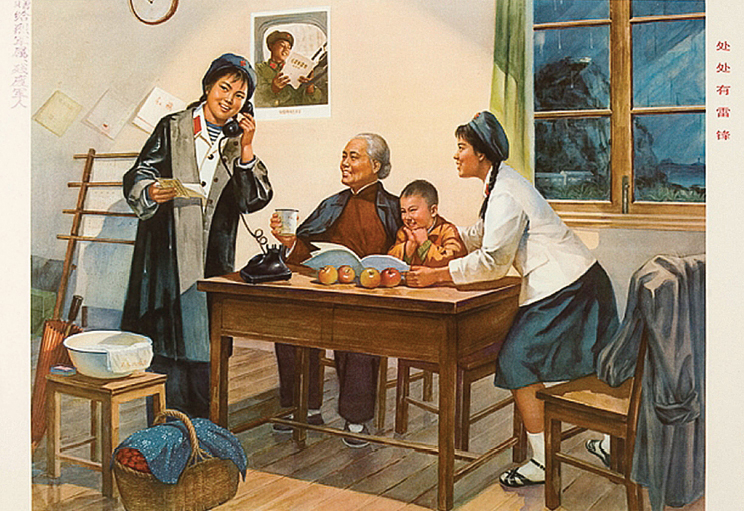
Communist China Poster ArtOne of the most popular art forms in Communist China was poster art, millions of copies of which were printed to adorn the walls of homes, offices, factories, and businesses. This uniquely Chinese form contained neither abstract, modern, or bourgeois elements nor classical Chinese art styles. Such posters glorified the state, its leaders, and the heroes of the revolution. The two young women in this poster wear uniforms and caps bearing the Communist red star, the five points of which represent the five components of Communist society: the youth, the army, the peasants, the workers, and the intellectuals. (Courtesy, Chinese Poster Collection, University of Westminster, London)> PICTURING THE PASTANALYZING THE IMAGE: Who is depicted, and what are they doing? What message do you think the artist seeks to convey with this image?CONNECTIONS: What social function or application might posters such as this one have? Is this sort of expression unique to Communist societies, or can you think of examples of other types of art that promote public messages?
IIN ASIA JAPAN’S DEFEAT ended the Second World War, but other conflicts continued: nationalists in territories colonized by European nations intensified their struggle for independence, and in China Nationalist and Communist armies confronted each other in a renewed civil war. In 1949 Communist forces under Mao Zedong triumphed and established the People’s Republic of China. The Communist victory in China shaped the nature of Japan’s reconstruction, as its U.S. occupiers determined that an industrially and economically strong Japan would serve as a counterweight to Mao. U.S. fear of the spread of communism drew the country into conflicts in Korea and Vietnam, intensifying the stakes in the decolonization struggle across East and Southeast Asia.
